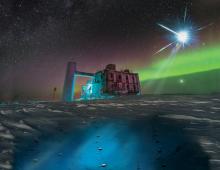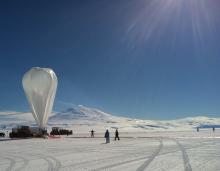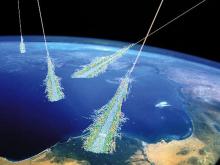Listen to today's episode of StarDate on the web the same day it airs in high-quality streaming audio without any extra ads or announcements. Choose a $8 one-month pass, or listen every day for a year for just $30.
You are here
Cosmic Hazards
When it comes to space travel, if one thing doesn’t get you, another just might. When the Sun is quiet, for example, it lets in more radiation from outside the solar system. A recent study, in fact, said the level of cosmic rays could jump by as much as 30 percent in a few years, when the Sun is at its quietest.
Cosmic rays are energetic particles from exploding stars and other objects. They can damage a spacecraft’s electronics, perhaps even knocking the craft out. They also can harm any human occupants, increasing the risk of organ damage and cancer.
When the Sun is active, its winds and magnetic field act as a shield against cosmic rays — they keep most of them from reaching the inner solar system. But the Sun’s activity changes over a period of 11 years. At its peak, it produces a lot of dark sunspots and big outbursts of energy and particles. These activities also can endanger electronics and people, but they keep the cosmic rays at bay. At its lowest point, though, the Sun is quiet, so many more cosmic rays get through.
The last couple of cycles have been unusually quiet, with the low points especially so. At the same time, observations from an instrument on a Moon-orbiting satellite have shown that the number of cosmic rays has been jumping faster than expected. As a result, the level of cosmic rays could jump by up to 30 percent at the next solar minimum — another hazard for the dangerous business of spaceflight.
Script by Damond Benningfield





